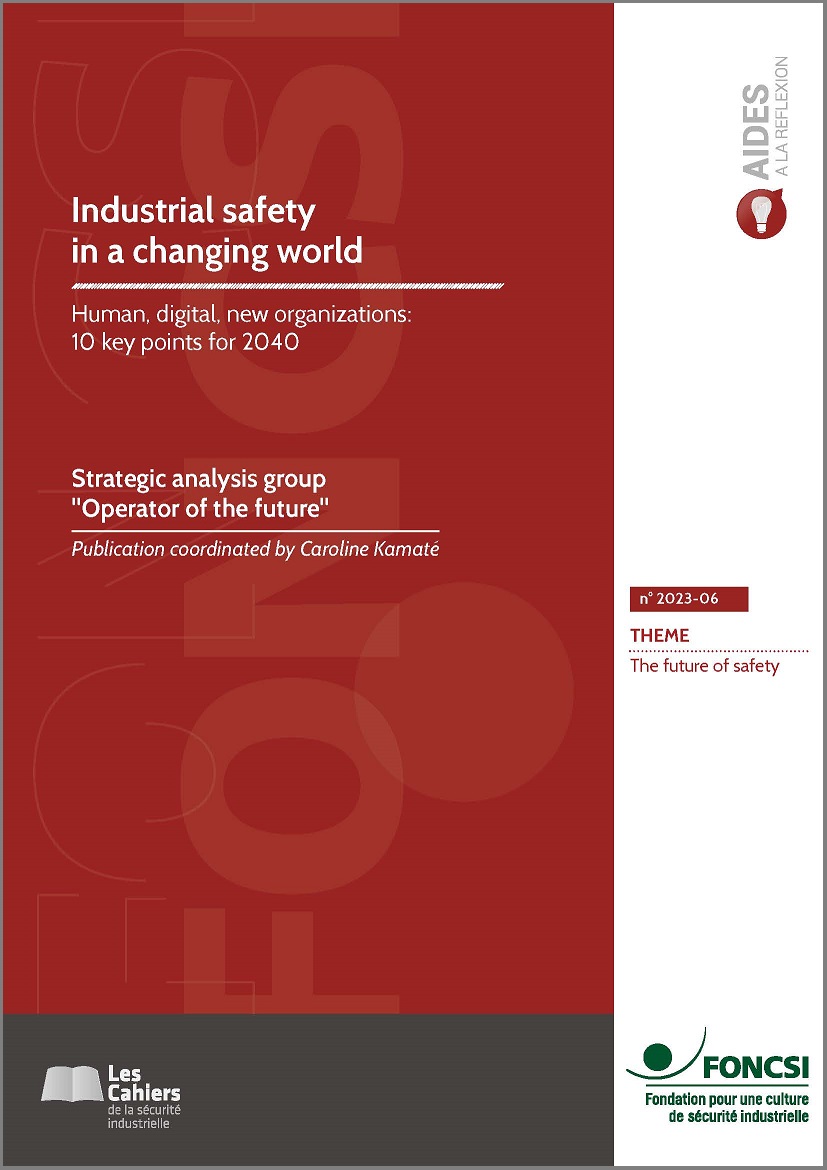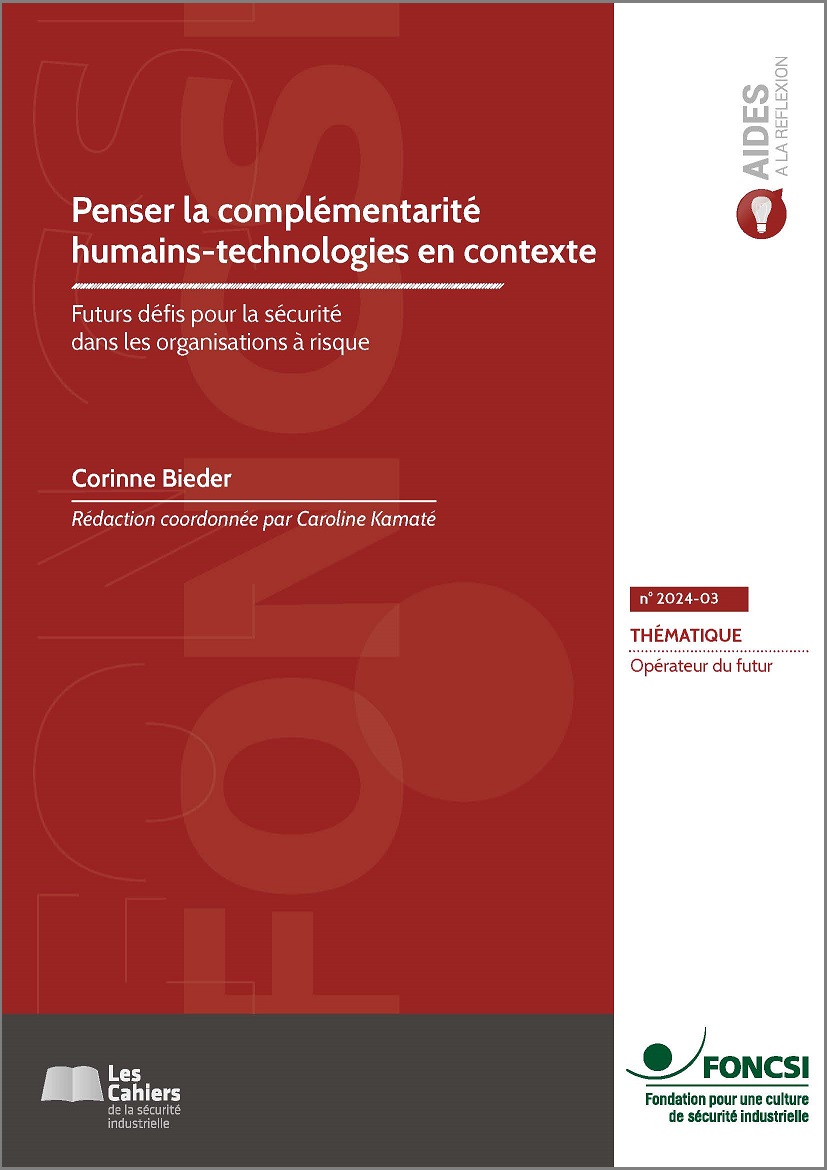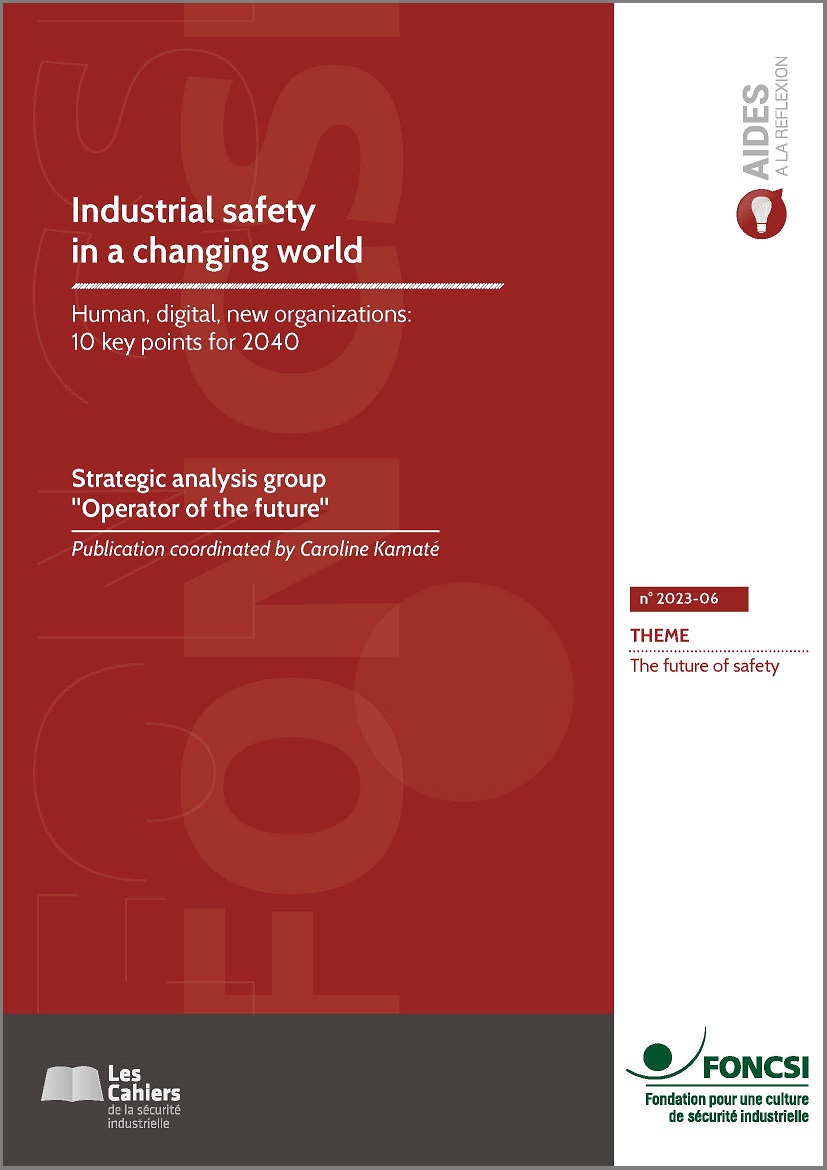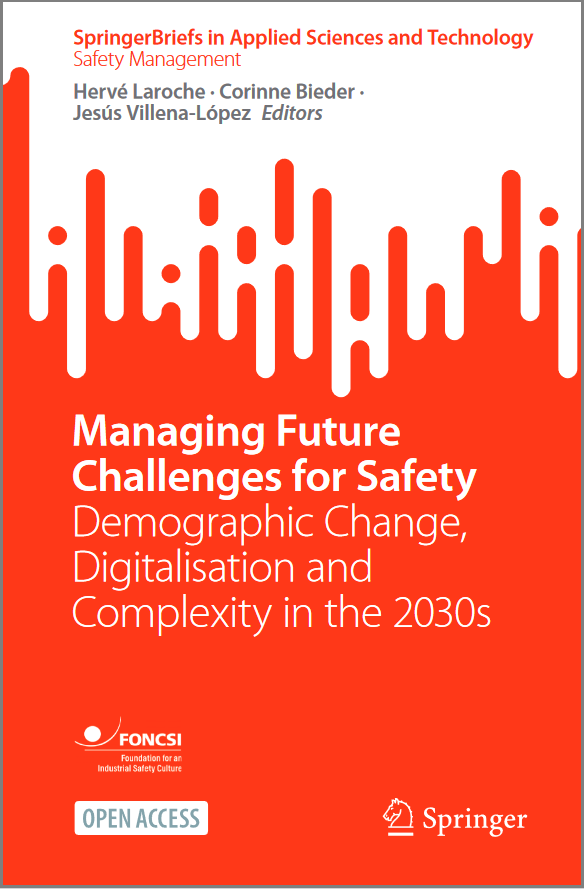This “Cahier” (Notebook): presents the results of the strategic analysis on the topic of “Work and workers in the future”, worked from 2019 to 2021.
What’s in it?
Demographics, technological advances, globalization, industrial disaggregation, system complexity, interdependence, etc. Between now and 2030-40, the megatrends affecting our world, our societies, and therefore the world of at-risk industrial activities, will force us to revisit our approach to safety. What impact could these developments have on HSE departments and, beyond that, organizations? What new production methods, new organizations and new professional profiles will be required, against a background of anticipated technological change, a new generation of employees, and society’s expectations? Why, and how should at-risk industries adapt their safety vision and actions to meet tomorrow’s challenges?
1 « Cahier » & 1 « Springer »
To present the results of this work, FonCSI offers two freely downloadable publications in English:
An academic publication published in 2022, in the “SpringerBriefs in Safety Management” collection: Managing Future Challenges for Safety.
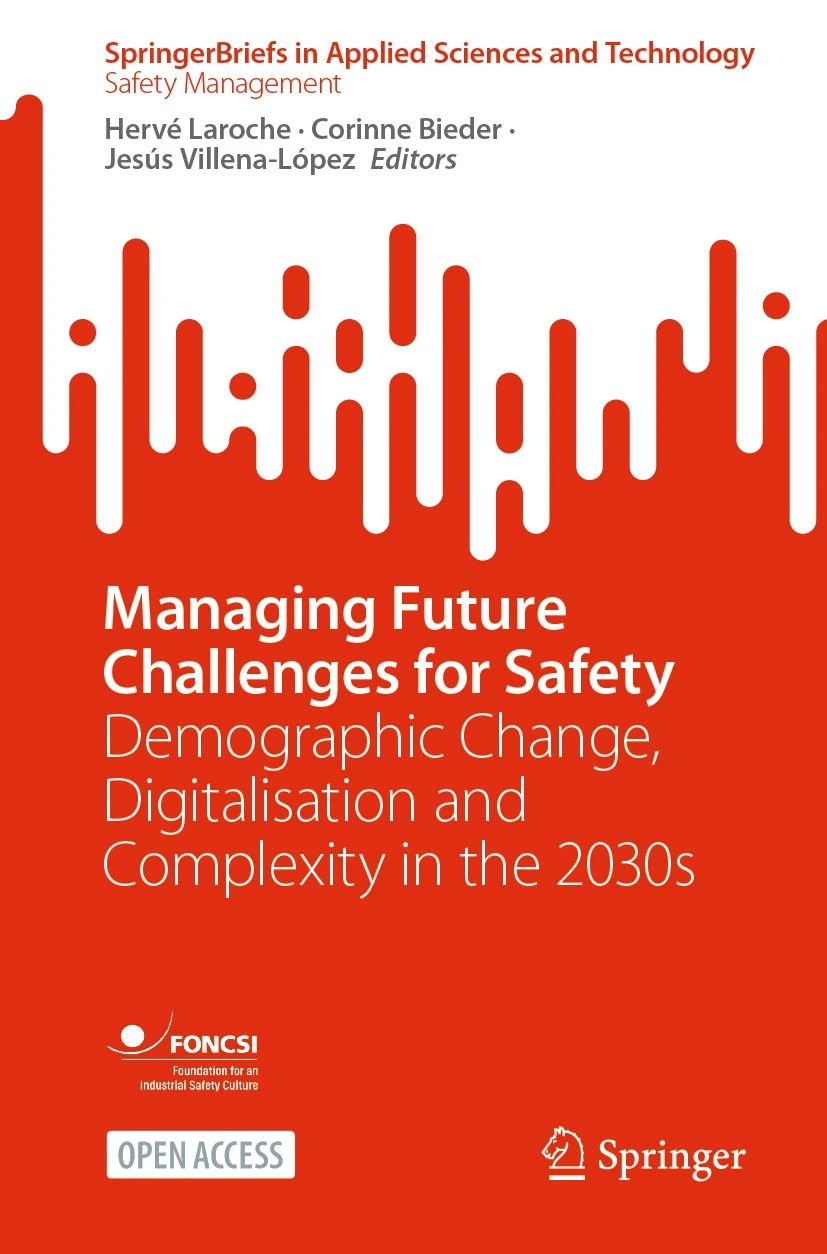
And the « Cahier de la sécurité industrielle » published in 2023: Industrial safety in a changing world.
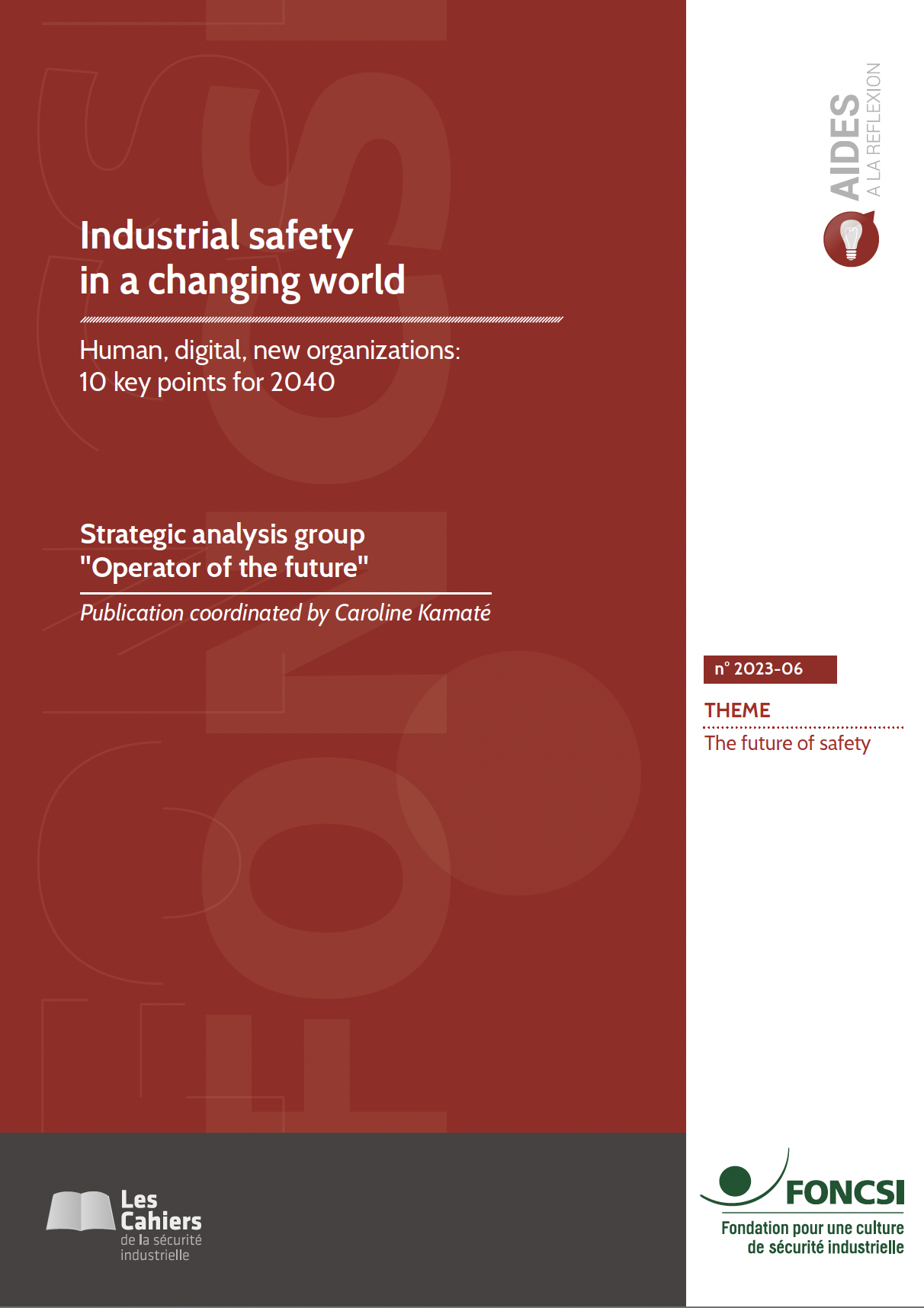
Focus on the Notebook
7 safety challenges in a changing world:
- The world’s increasing complexity, uncertainty and instability will impact safety
- The unique characteristics of human operators will always contribute to safety
- The ‘skills challenge’, including safety skills, will become significant
- Differences in organizational and generational culture will test safety culture
- More, and more diverse safety stakeholders
- The governance model, based on the regulation-control-certification triad, will be revisited
- A shake-up of the current dominant approach to safety, based on anticipation and prescription
3 approaches to industrial safety between now and 2030-40:
- Adopt a more open approach to safety
- Move beyond current safety management and governance strategies
- Ensure consistency between prescription, hierarchy and autonomy at the organizational level
Finally, congratulations to the authors of this work and to the scientific strategic analysis group: Corinne Bieder (ENAC), Hervé Laroche (ESCP Business School), Jesús Villena López (Ergotec), Florence Reuzeau (Airbus), Raluca Ciobanu (EDF), Laurent Cebulski & Bruno Dember (EPSF), Nicolas Engler (GRTgaz), Dounia Tazi (ICSI), Alexandre Largier & Tania Navarro Rodríguez (IRSN), Stella Duvenci-Langa & Cyril Cappi (SNCF) and Raphael Waxin (TotalEnergies).
And Caroline Kamaté from FonCSI who coordinated all of this work.
Enjoy the books!
 19/10/2023
19/10/2023
